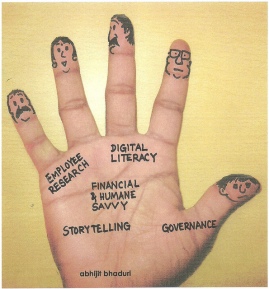
It’s been 3 years since the HR TECH world witnessed the SuccessFactors and Taleo acquisitions by the largest ERP vendors, SAP and Oracle – these were deals that fundamentally changed the global HR, Talent and Payroll technology landscape, including the role and relationship of the vendor and implementation partners(Si’s) with clients.
The battle for dominance among the then newly adoptive parents, SAP and Oracle, the ever-popular Workday and a host of other best-of-breed HR SaaS and cloud products centered around the lucrative 3 year annuity contract. Vendors and Si’s stripped out all but the bare necessity costs in order to live up to the reputation that SaaS was an easily justifiable ROI.
While the vendors have been focussed on maintaining their data centres, building and deploying updates and new functionality as well as executing competitive selling strategies, the SI’s have re-jigged their implementation approaches and staffing models. Certainly the last few years have been underpinned by tough business transformation for vendors and Si’s. For many service providers in this space, their attention has been split between their internal changes and the ongoing needs of their clients. This may come back to haunt the vendors and SI’s.
Keeping profitable from selling SaaS solutions is very different from that of ERP. If you needed 2 to 3 long-term ERP project to keep you business profitable then you now need 6 to 9 times more SaaS projects to achieve similar revenues and margins. That’s tough and the real issue is that the effort required to sell a SaaS deal is not commensurate to the implementation time – it still takes significant time.
2015 is a year of reckoning in many respects with quite a number of annuity deals which were struck in 2012 up for review. What will the client retention rate be for SAP, Oracle, Workday and others, and what is an acceptable benchmark? Salesforce.com is a SaaS stalwart with a retention rate of +90%, so perhaps we should expect similar scores from the HR SaaS players. I have my doubts – some of my intel would suggest some vendors are closer to an 80% CRR (country specific).
Ultimately the client will decide to stay with a product/vendor based on their experiences with the SaaS product, vendor and SI’s as well as any broader technology objectives and strategies. While ERP implentations provide lengthy on-site opportunities to develop deep and trusting relationships and easily positioning the next piece of work, the SaaS approach doesn’t. If the vendor and/or SI have been the proverbial ‘Hockey Stick’ and not actively and regularly engaging with their clients through high quality 24/7 support programs, continuous improvement initiatives, thought leadership exposure and robust future design and strategy workshops, then they are at risk of loosing clients, and deservedly so.
Time will tell.


 2012 ushered in a new era for HR software solutions. It will be a year that we saw some really big deals going down as the big boys of the ERP world manoeuvred themselves into strategic positions within the cloud ecosystem. The writing was on the wall and vendors that didn’t have a cloud based solution and strategy (or at least claim they had one) were likely to face some difficult times financially and competitively over the next three years.
2012 ushered in a new era for HR software solutions. It will be a year that we saw some really big deals going down as the big boys of the ERP world manoeuvred themselves into strategic positions within the cloud ecosystem. The writing was on the wall and vendors that didn’t have a cloud based solution and strategy (or at least claim they had one) were likely to face some difficult times financially and competitively over the next three years.